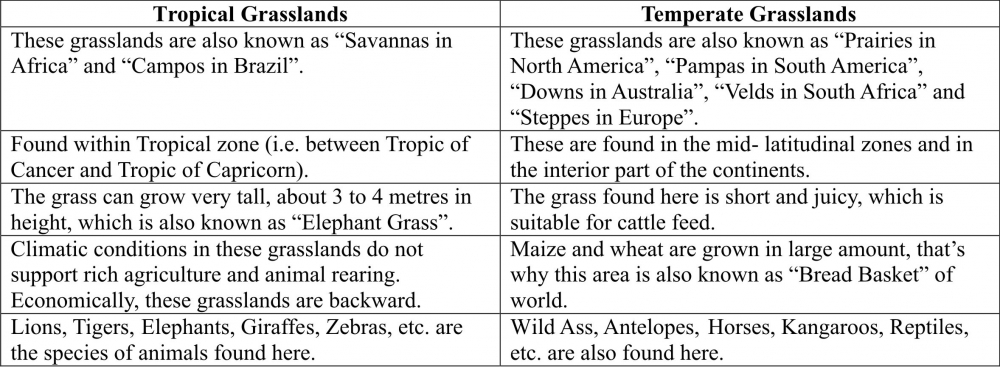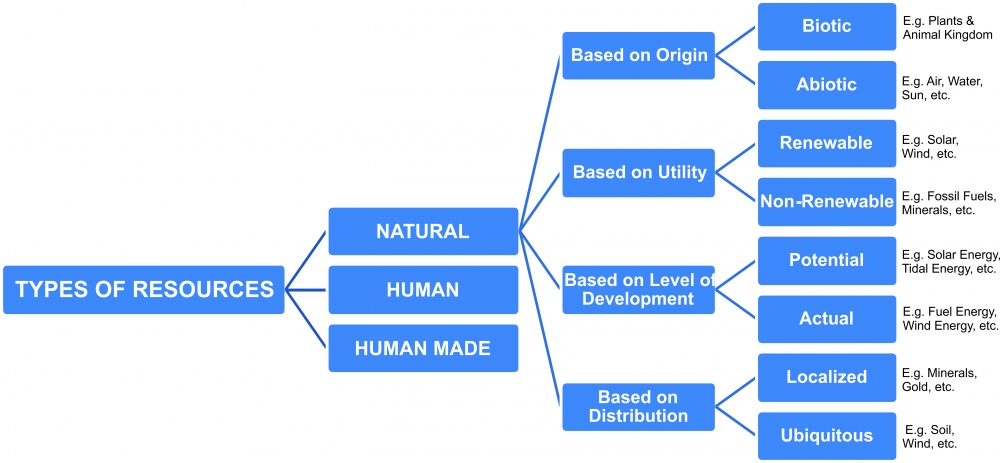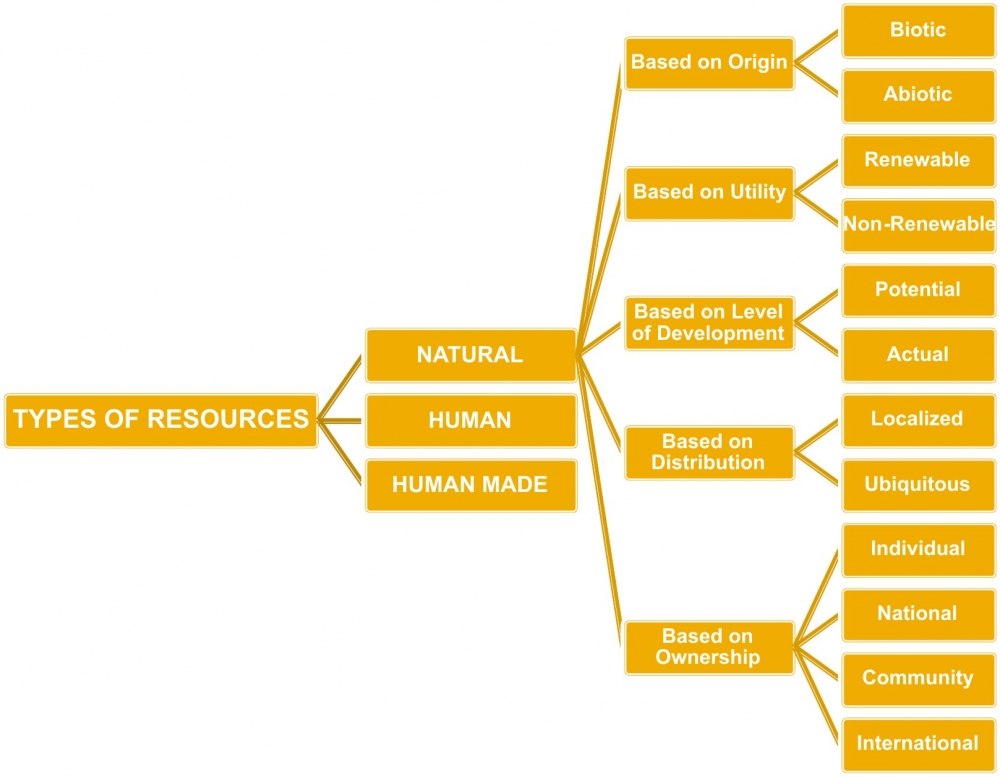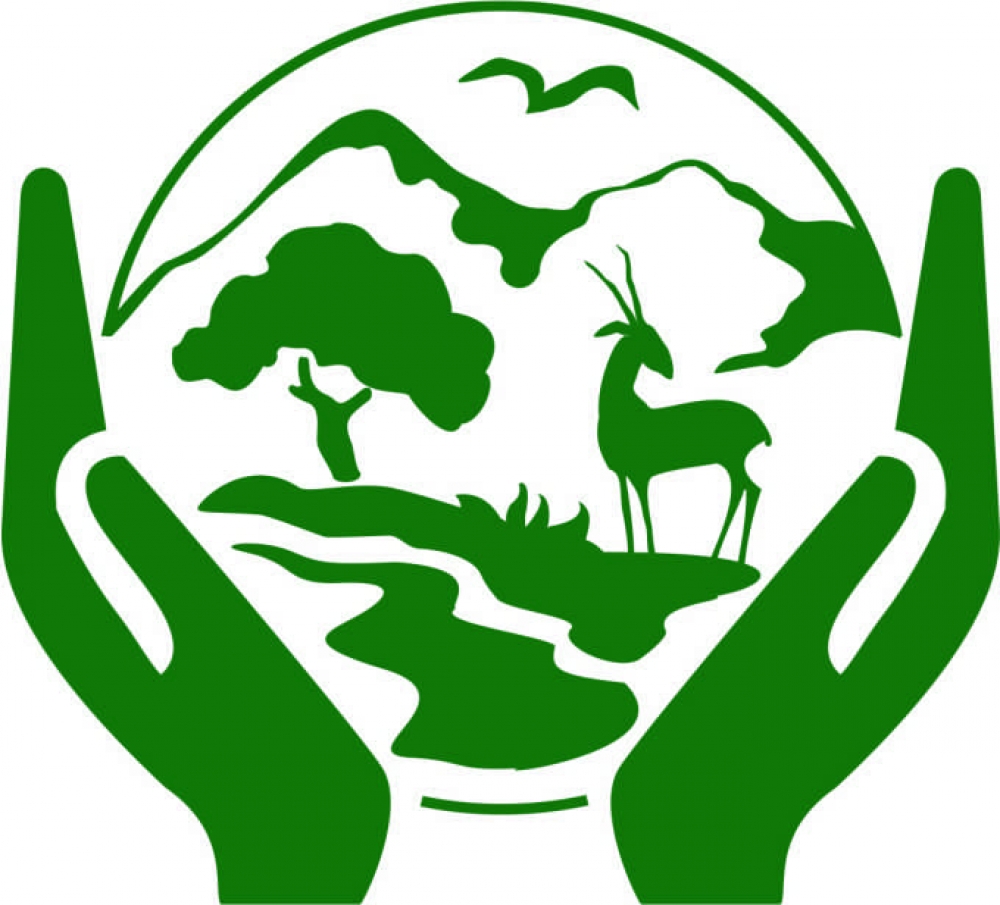Class VIII: Chapter 4 (Minerals and Power Resources) Question and Answers
Distinguish between the following
Q1. Metallic and non-metallic minerals.
Ans:

Q2. Conventional and non-conventional power resources.
Ans:
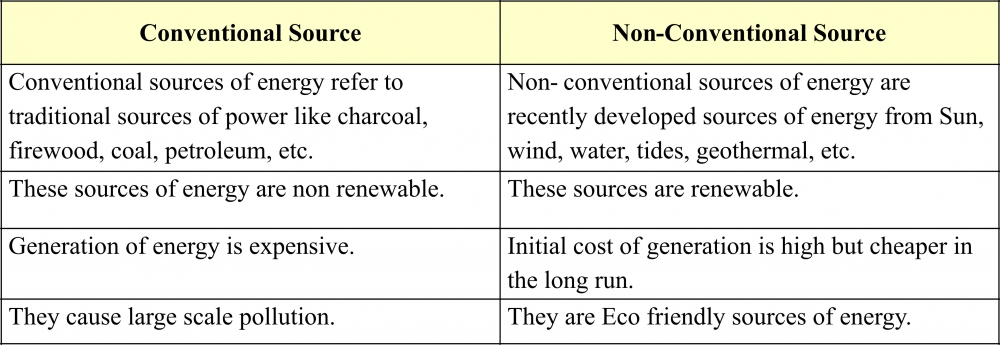
Short Answer Questions
Q3. What are the main characteristics of minerals?
Ans: The three main characteristics of minerals are:
(a) Minerals are present in impure form and it takes millions of year to form these minerals.
(b) Minerals are unevenly distributed throughout the world.
(c) Minerals are non-renewable 'exhaustible' resources.
Q4. How did minerals influence the history of human civilization?
Ans: Minerals have played an important role in the history of human civilization. Thus, various stages of human development have been named after different minerals, such as: Stone Age, Copper Age, Bronze Age, Iron Age, Steel Age, etc. During the last almost 200 years, humans have made a great progress in the discovery, extraction and utilization of minerals. Growth of minerals shows the growth of human life.
Q5. Why is petroleum called 'black gold'?
Ans: Petroleum is called as the black gold because it is the prime source of energy and has got great economic importance. Petroleum provides us with variety of products like Petrol, Diesel, Kerosene, Wax, Plastic and other lubrication. It acts as raw material in synthetic textiles, fertilizers, chemical industries, etc.
Q6. How can we conserve minerals and power minerals?
Ans: Population growth, urbanization and industrialization have increased the consumption of minerals and power minerals to a greatest extent in the 21st century and there is a serious need for the conservation of minerals. Following are the different ways of conserving minerals:
(a) We can make use of energy efficient equipments.
(b) Looking for alternative sources of energy.
(c) Recycling of minerals.
(d) Optimum utilization of minerals.
(e) Improvement in the techniques of extraction and purification of minerals.
Long Answer Questions
Q7. Explain the methods of mineral extraction.
Ans: Minerals can be extracted by Mining, Drilling and Quarrying.
(a) Mining: The process of taking out minerals from rocks buried under the earth's surface is called mining, Drilling and Quarrying.
(i) Open Cast Mining: Minerals that lie at shallow depths are taken out by removing the surface layer is known as "Open Cast Mining".
(ii) Shaft Mining: Deep bores, called shafts, have to be made to reach mineral deposits that lie at great depth; this is known as "Shaft Mining".
(b) Drilling: Petroleum and natural gas occur far below the earth's surface. Deep wells are bored to take them out; this is called "Drilling".
(c) Quarrying: Minerals that lie near the earth's surface are simply dug out by the process known as "Quarrying".
Q8. What is a mineral? Discuss different types of minerals on the basis of their composition in details.
Ans: A naturally occurring substance that has a definite chemical composition is known as a mineral.
Minerals are broadly classified into three types: Metallic, Non-Metallic and Power Minerals.
(a) Metallic Minerals: Most of the metallic minerals are found in old plateaus which mainly contains igneous and metamorphic rocks. E.g. Iron, Nickel, Platinum, etc. Metallic minerals are further classified into: Ferrous and Non-Ferrous Minerals.
(i) Ferrous Minerals: These minerals contain iron, for e.g. iron, nickel, etc.
(ii) Non-Ferrous Minerals: These minerals do not contain iron, for e.g. gold, silver, etc.
(b) Non-Metallic Minerals: These minerals are found in the young fold mountains, which mainly consist of sedimentary rocks. E.g. Limestone, Sandstone, Marble, etc.
(c) Power Minerals: Power or energy minerals play a vital role in our lives. We also need power for industry, agriculture, transport, communication and defense. Power resources may be broadly categorized as conventional and non-conventional resources.
(i) Conventional Resources: These resources have been used for a very long time. For e.g. Firewood, cattle dung cake, coal, petroleum, natural gas, etc.
(ii) Non-Conventional Resources: These resources are called new sources of energy. For e.g. Solar, wind, tidal, geothermal, biogas, etc.
Q9. Discuss non-conventional power sources.
Ans: The increasing use of conventional sources of energy has lead to many environmental disorders like pollution which leads to global warming. The fuel reserves are getting exhausted. Therefore, there is need for using non-conventional sources such as solar energy, wind energy, tidal energy, geothermal energy, biogas, etc. which are renewable, eco friendly and available in abundance. Non- conventional sources of energy are recently developed sources of energy, Initial cost of generation is high but they are cheaper in the long run. In short, non-conventional source of energy is an alternate to the conventional sources of energy which is not harming our environment.
Q10. Write a short note on "Energy needs of the future".
Ans: Energy in the modern world plays a very important role. Today, we cannot imagine life without energy, almost in every sector there is huge demand for energy. Population is growing day-by-day and grows the industrial sector to fulfill the demands of the people. We have been using the conventional sources of energy all these years but unfortunately this has lead to environmental pollution and many health problems. With the increase in technology, human beings have learnt to use the non-conventional sources of energy like solar, wind, etc. Although, in the initial stages usage of non-conventional sources of is very expensive but in the longer run it can prove to be very beneficial. These sources of energy are present everywhere and do not cause any pollution. In simple words, demand for energy will keep on increasing with the passage of time and we as human beings should act intelligently and innovatively to finds out new sources of energy to fulfill the demands of future generations.
-----x-----X-----x-----

